
This resource is a poster of the functions of the 3 branches of government.
- Subject:
- Social Studies
- Material Type:
- Reading
- Provider:
- USA.gov
- Author:
- USA Gov
- Date Added:
- 02/20/2017

This resource is a poster of the functions of the 3 branches of government.

This parent guide supports parents in helping their child at home with the 3rd grade Social Studies content. Within the folder you will access Parent Guide PDFs in FIVE Languages: Arabic, English, Hindi, Spanish, and Vietnamese to help on-going communication with caregivers.

This resource accompanies our Rethink 3rd Grade Science course. It includes ideas for use, ways to support exceptional children, ways to extend learning, digital resources and tools, tips for supporting English Language Learners and students with visual and hearing impairments. There are also ideas for offline learning.

Students will discuss what some problems in their local community are, and how their local government solved a particular problem in their community. Then they will work in groups to solve their own community problem - there is no water storage in the town. Students will create a free standing water tower that can store one cup of water without leaks or spillage.

Students will identify services provided by local government and determine which government departments are responsible for various services. They will then assume the roles of city council members and prioritize various government services, allocating mock resources accordingly. Finally, students will discuss the importance of being active citizens and participating in their local government.
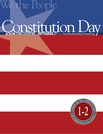
For this activity, students learn several important facts about the Constitution and its history.
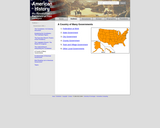
These pages shows students the structure of different local governments and how it functions to serve citizens.

These pages allow students to understand the executive branch of government. They will read about constraints and powers of the office of President as well as the departments they oversee.

Students learn about how public officials are selected, including election and appointment. Students also learn about and compare the roles of mayor, governor, and president along with learning who our current government leaders are.

In this lesson, students learn about how public officials are selected, including election and appointment. Students also learn about and compare the roles of mayor, governor, and president along with learning who our current government leaders are.

With this lesson, student explore the structure of government at the local, state, and national levels, as well as the services the government provides, and the financing for the services. Students compare the three branches of government focusing on the executive branch, how the levels work together and the enforcement of rules and laws.

With this lesson, students learn about local, state, county and national group decisions on taxation, as well as consent of the governed and how leaders can be elected who will fulfill the wishes of the people as designed by the Founding Fathers through the United States Constitution. Students also review traits of good citizenship and consider how they can help their own communities.

Students explore the structure of government at the local, state, and national levels, as well as the services the government provides, and the financing for the services. Students compare the three branches of government focusing on the executive branch, how the levels work together and the enforcement of rules and laws.
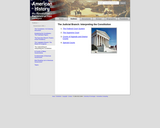
These pages expose students to the organization and function of the judicial branch of government.
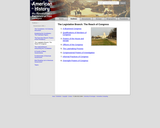
These pages allow students to see the organizational structures and powers of the United States Congress.
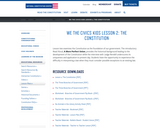
In this lesson, students examine the Constitution as the foundation of our government. The introductory Read Aloud, A More Perfect Union, provides the historical background leading to the development of the Constitution while the interview with Judge Rendell underscores its uniqueness and application to present day. Students have the opportunity to experience the difficulty in interpreting a law when they must consider possible exceptions to an existing law.

In this lesson, the students will learn about their local government and leaders. Throughout the lesson, students will engage in discussions, a visit by an elected local government official and research. In addition, students will learn some basic facts about their local government.

Students learn about local, state, county and national group decisions on taxation, as well as consent of the governed and how leaders can be elected who will fulfill the wishes of the people as designed by the Founding Fathers through the United States Constitution. Students also review traits of good citizenship and consider how they can help their own communities.

This course was created by the Rethink Education Content Development Team. This course is aligned to the NC Standards for 3rd Grade Social Studies.

This course was created by the Rethink Education Content Development Team. This course is aligned to the NC Standards for 3rd Grade Social Studies.